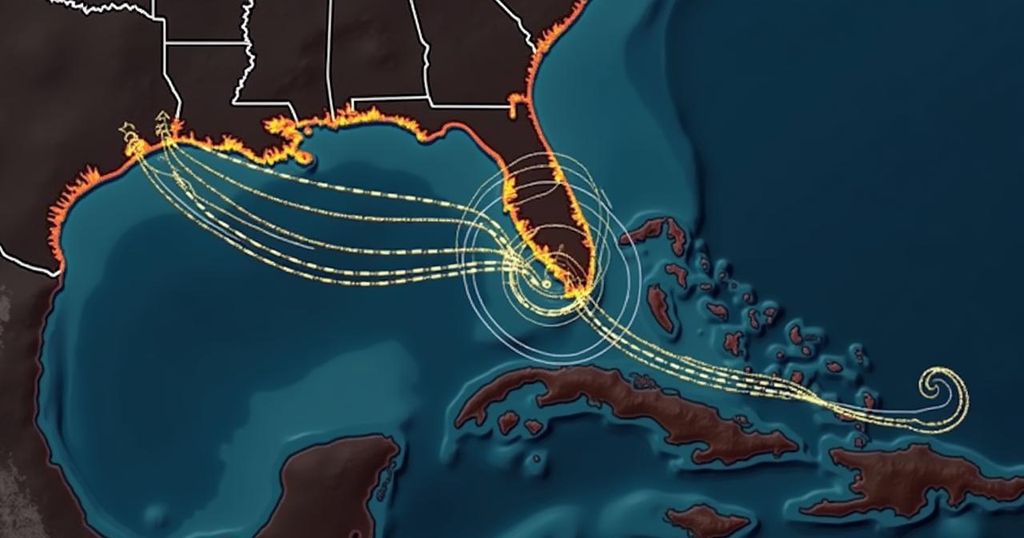Hurricane Helene’s Path of Destruction Across the Southeastern U.S.
Hurricane Helene made landfall in Florida as a Category 4 storm, causing at least 22 deaths and power outages for over 4.5 million people. It weakened as it moved inland, impacting Georgia and the Carolinas, with evacuations ordered in Tennessee and North Carolina due to dam failures from heavy rainfall. Helene marks the 22nd Category 4 hurricane in the U.S. since 1920, with the full extent of damage yet to be assessed.
Hurricane Helene made landfall as a devastating Category 4 hurricane in the Big Bend region of Florida on Thursday evening, resulting in significant power outages for millions and severe flooding as it advanced through Georgia and further into the Carolinas. As authorities initiate damage assessments in Florida, the focus of attention is progressively shifting northward. The hurricane struck with wind speeds of 140 mph approximately 10 miles west of Perry, Florida, at 11:10 p.m. ET on Thursday, marking it as the first Category 4 storm to impact the Big Bend area since 1851, according to USA TODAY. Reports indicate that at least 22 fatalities have occurred, with over 4.5 million individuals across six states, including Tennessee and Virginia, suffering from power interruptions. Helene’s intensity decreased as it moved inland, transitioning into a tropical storm with sustained winds of 45 mph by 11 a.m. ET on Friday, as reported by the National Hurricane Center. By that time, the storm was located approximately 30 miles southwest of Bryson City, North Carolina, and 105 miles north-northeast of Atlanta. In Newport, Tennessee, an evacuation order was issued on Friday at 2:56 p.m. due to the failing Waterview Dam, attributed to rising water levels caused by Helene. Authorities in Cocke County have also ordered evacuations along the Pigeon and French Broad rivers, as reported by the Knoxville News Sentinel. The extensive rainfall resulting from Helene is provoking floods in North Carolina, prompting additional evacuations with warnings of a potential failure of the Lake Lure Dam. Hurricane Helene is noted as the 22nd Category 4 hurricane to strike the United States since 1920, while only four storms have reached Category 5 status in the same timeframe. The extent of the devastation inflicted by Helene will take time to evaluate, as past hurricanes have led to billions of dollars in damages from flooding, structural impairment, and widespread power outages. This information has been updated with the latest developments.
Hurricanes are powerful storm systems that can cause catastrophic damage through high winds and heavy rainfall. The U.S. has a history of experiencing significant hurricanes, particularly in coastal regions, which often leads to severe flooding and energy outages. Category 4 hurricanes are characterized by wind speeds ranging from 130 to 156 mph and are capable of inflicting substantial damage to homes, infrastructure, and the environment.
In conclusion, Hurricane Helene has proven to be a catastrophic event as it struck Florida and spread through the southeastern United States, causing extensive damage, fatalities, and power outages. The storm’s impact emphasizes the continued vulnerability of regions affected by severe weather systems and the ongoing need for preparedness and response measures in the face of such natural disasters.
Original Source: www.usatoday.com




Post Comment